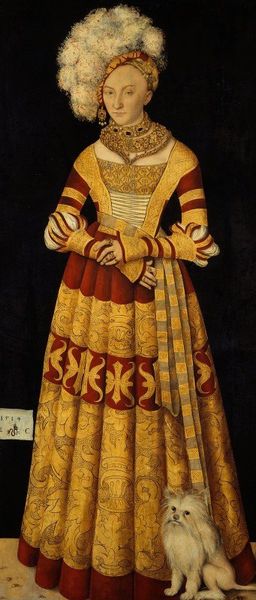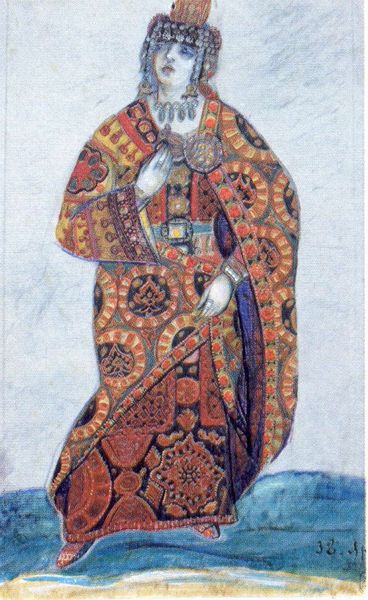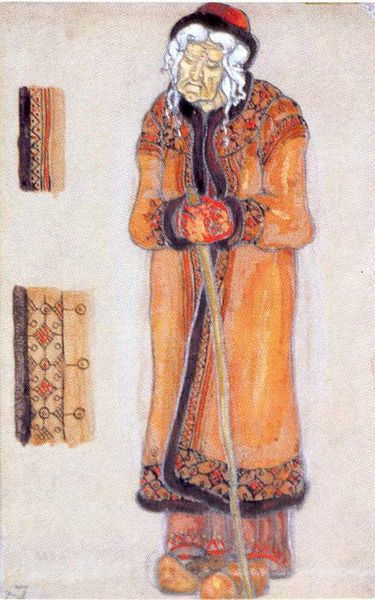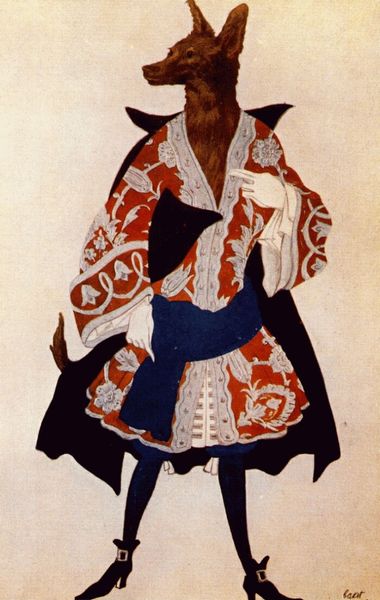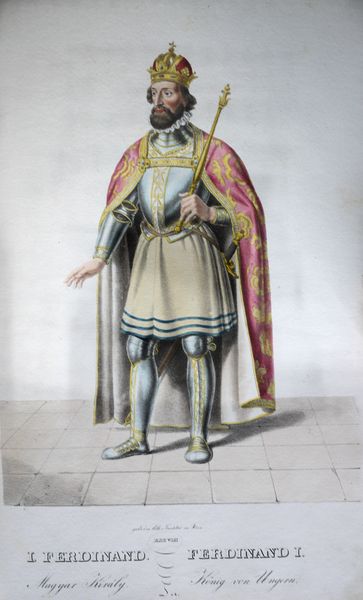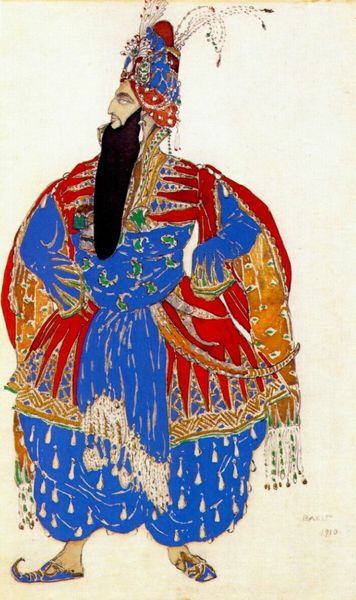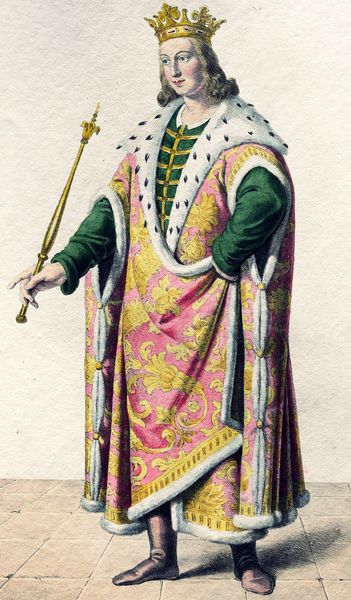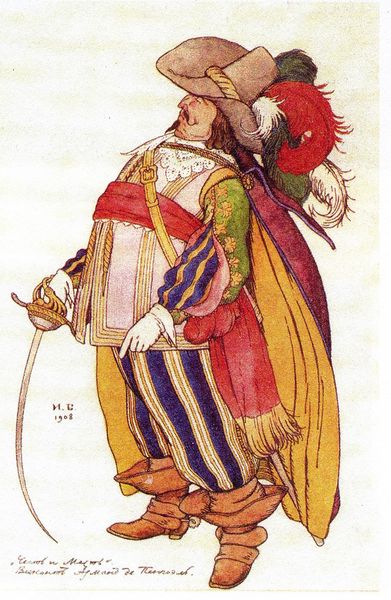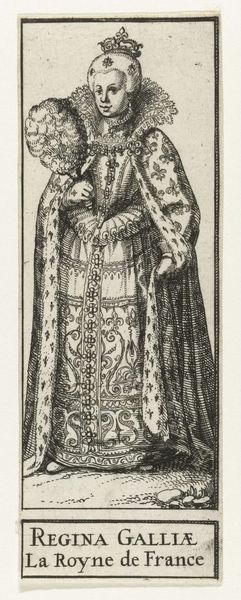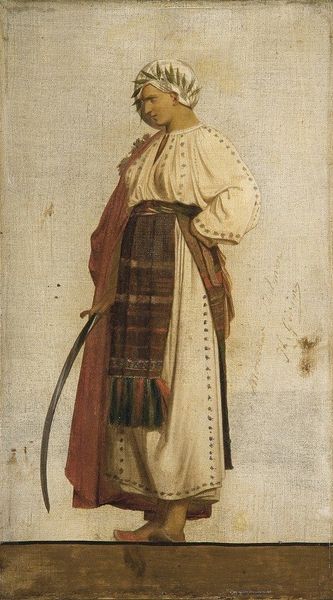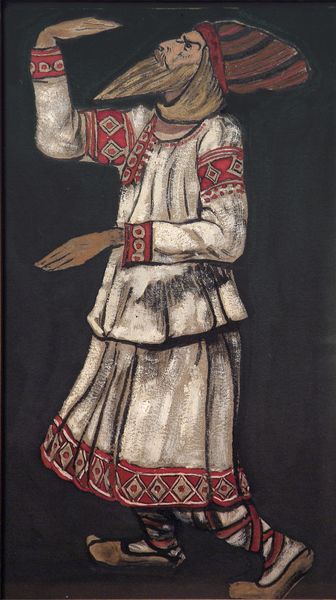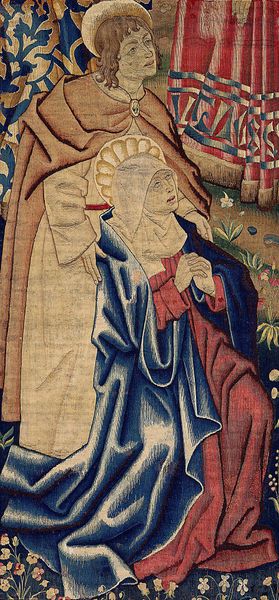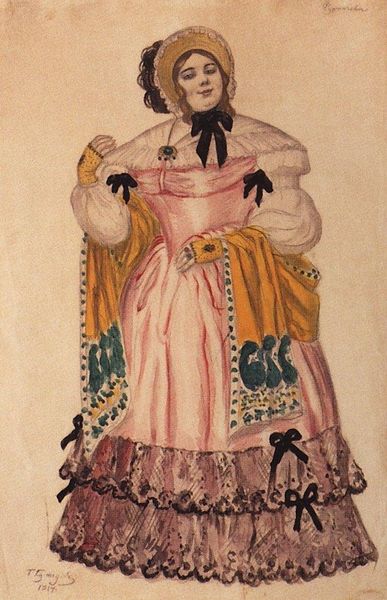
drawing, watercolor
#
drawing
#
watercolor
#
coloured pencil
#
orientalism
#
costume
#
symbolism
#
watercolour illustration
#
watercolor
Copyright: Public domain
Curator: A figure shrouded in captivating mystery. My initial reaction is wonder. There is something playful in the hearts juxtaposed with her striking gaze. Editor: This watercolour illustration, made with drawing media and entitled "Le dieu bleu bayadere," dates back to 1912. The artist is Léon Bakst. It’s a work that invites us to explore intersectional questions of representation and orientalism. Curator: Right. Bakst was deeply inspired by non-Western cultures and performance, but through whose lens are we really viewing this "god"? Are we celebrating or exoticizing? I can't quite resolve it. The rich visual symbols he uses here present the figure as almost otherworldly. It's as though he's trying to condense layers of divinity into human form, using colour as a means to elevate and separate from reality. Editor: Exactly. Looking through the lens of power dynamics in art, this image invites questions about cultural appropriation. This image comes across as the artist's attempt to show his vision of a stage costume that blends Western aesthetic taste with an imagined, idealized Orient. Do you feel that it essentializes an identity through symbolism or transcends boundaries? Curator: It's an impossible binary to resolve. However, consider the colour: the deep blue contrasted with the warmer golds, and that central swath of exposed skin, it pulls in your senses. Bakst certainly grasped how colour itself could carry a great weight. Editor: Agreed, and I do see that, while the painting certainly exoticizes elements of non-Western identity, one thing the piece also showcases is the subject's power and beauty, and what that represents in both the world, and the art. Curator: It’s a complex, unresolved image, for certain. An exquisite visual dance. Editor: Yes, with Bakst using layers of colour to invite reflection and cultural understanding.
Comments
No comments
Be the first to comment and join the conversation on the ultimate creative platform.
